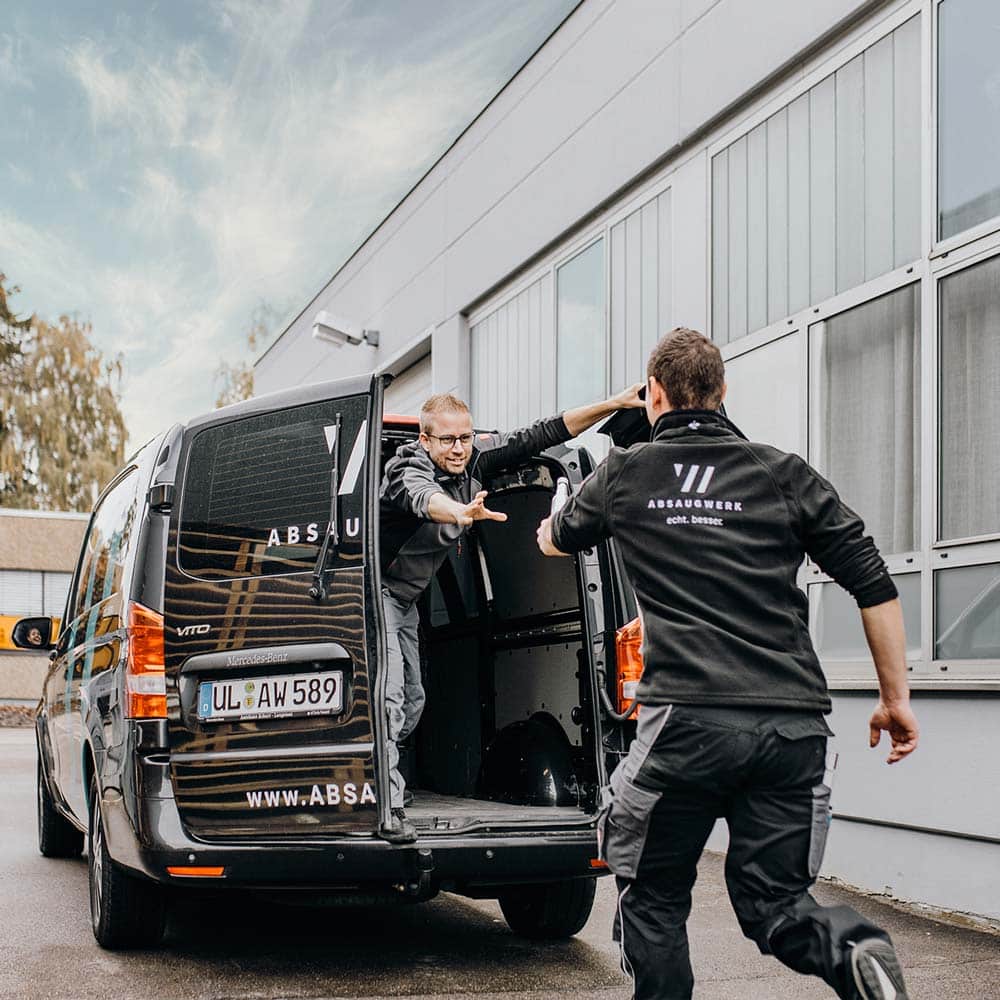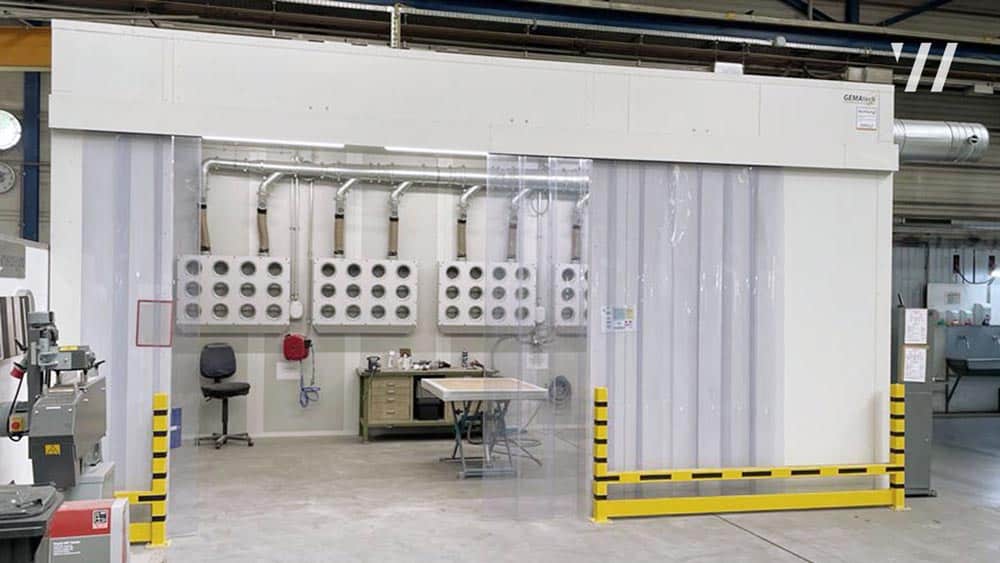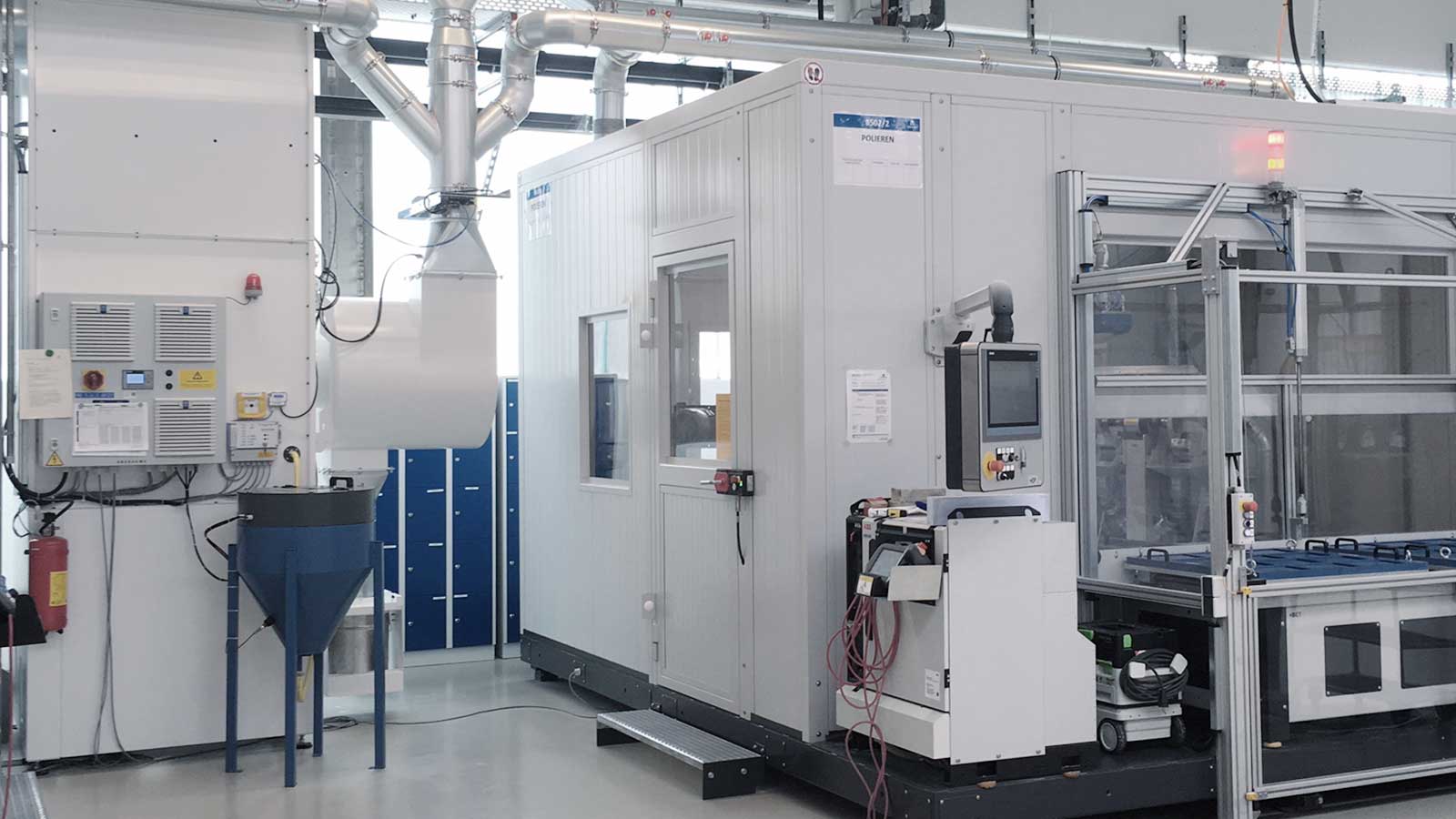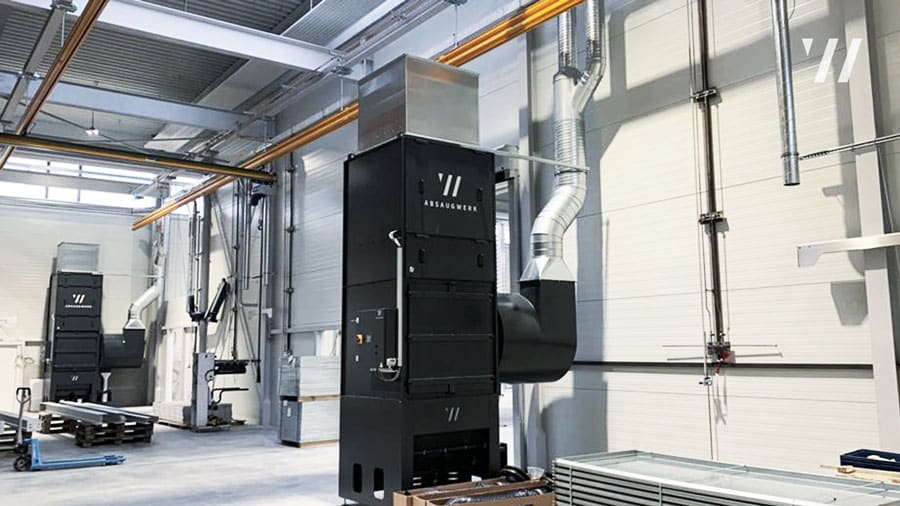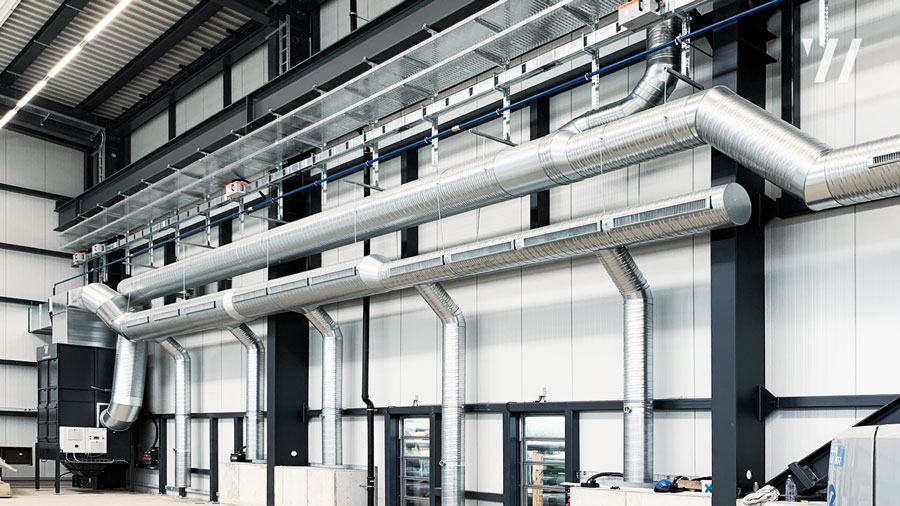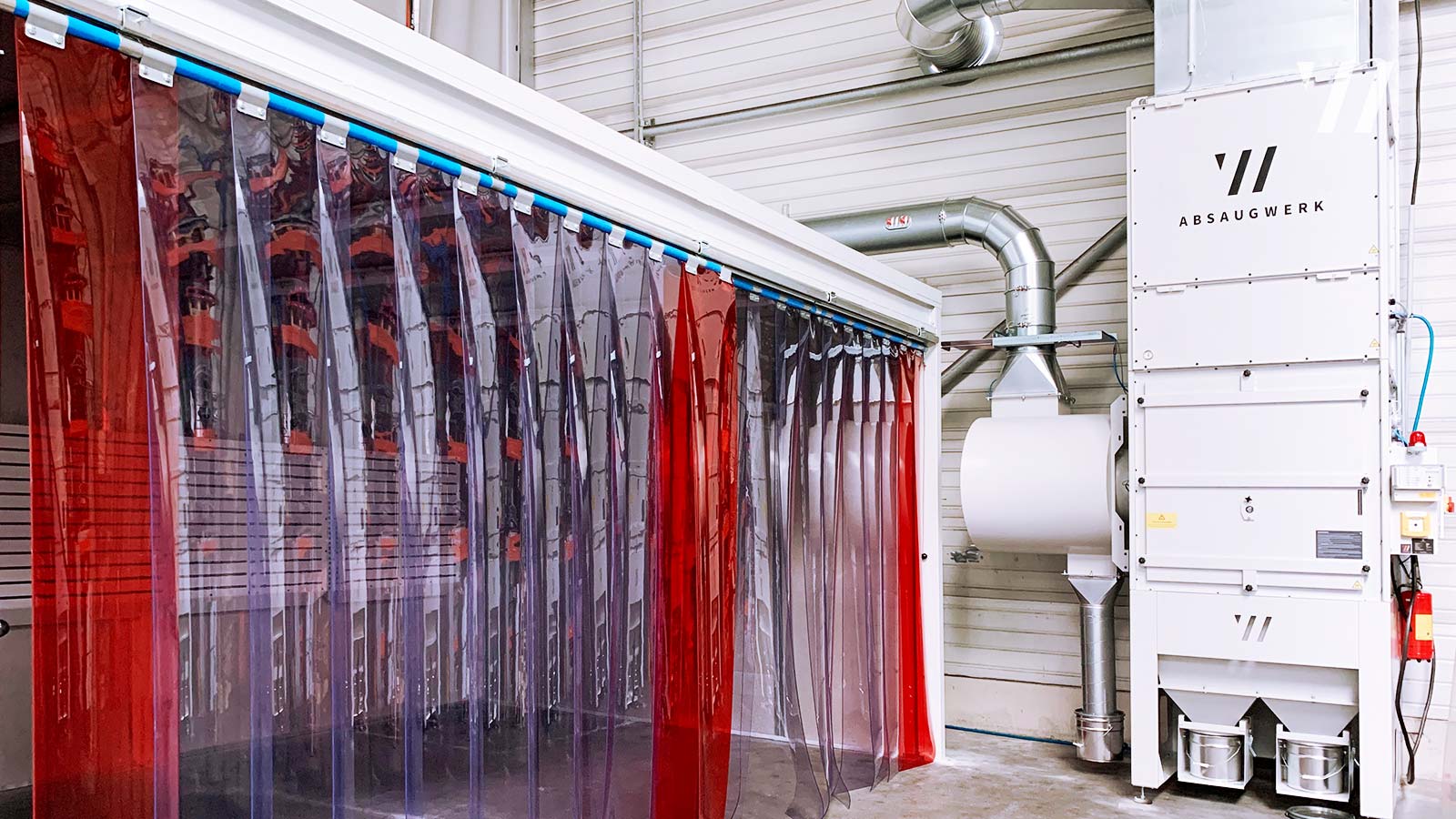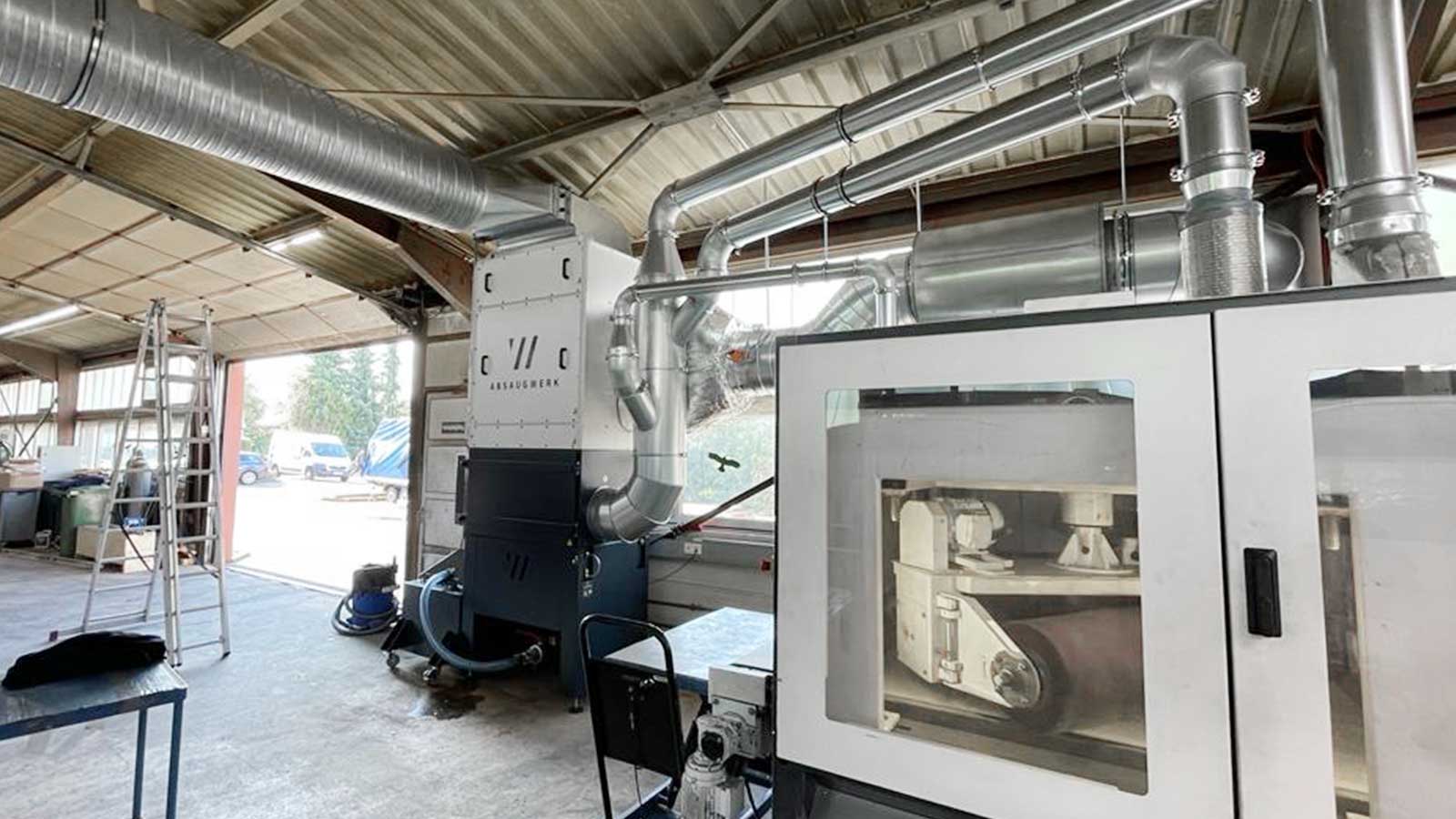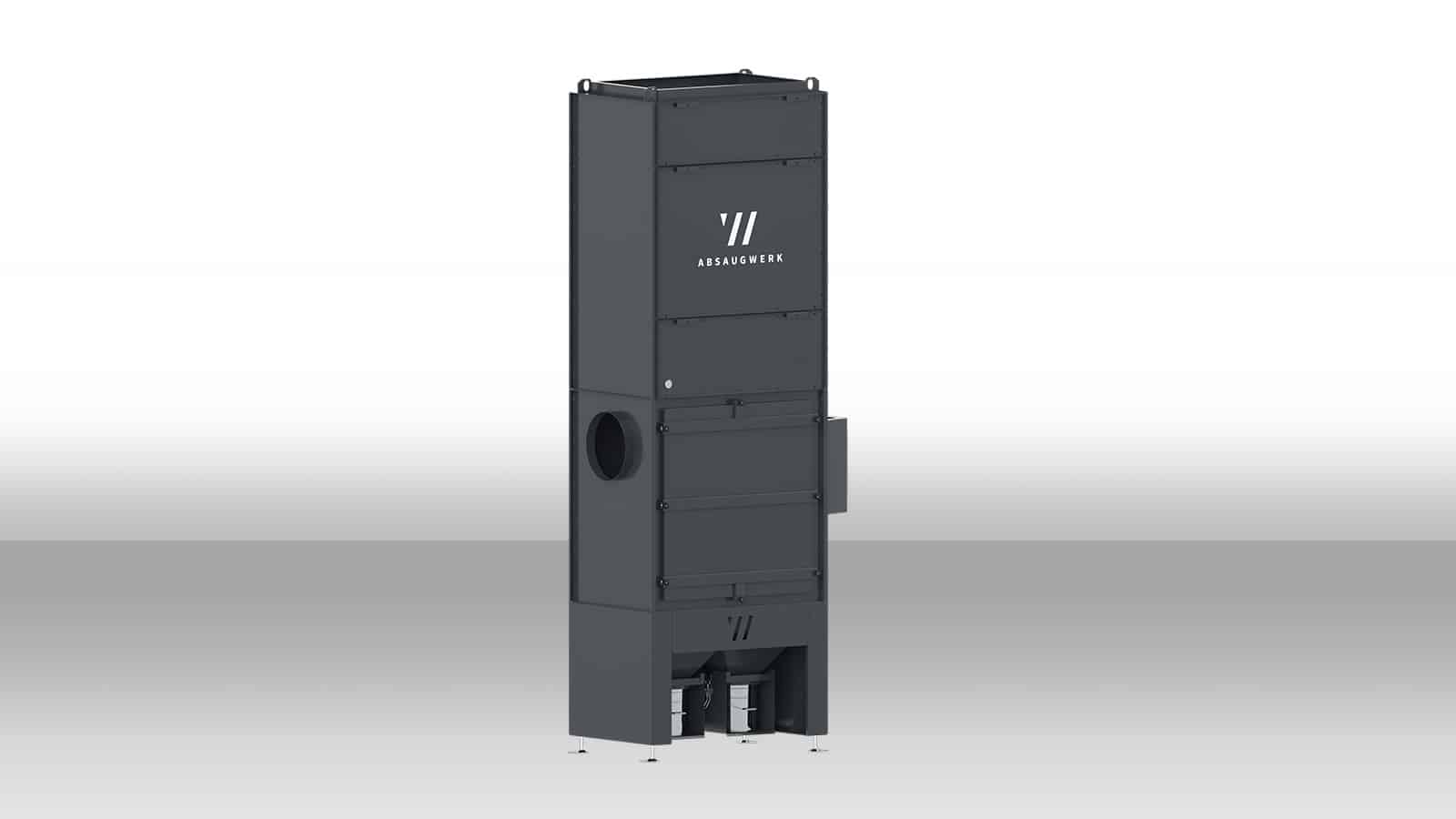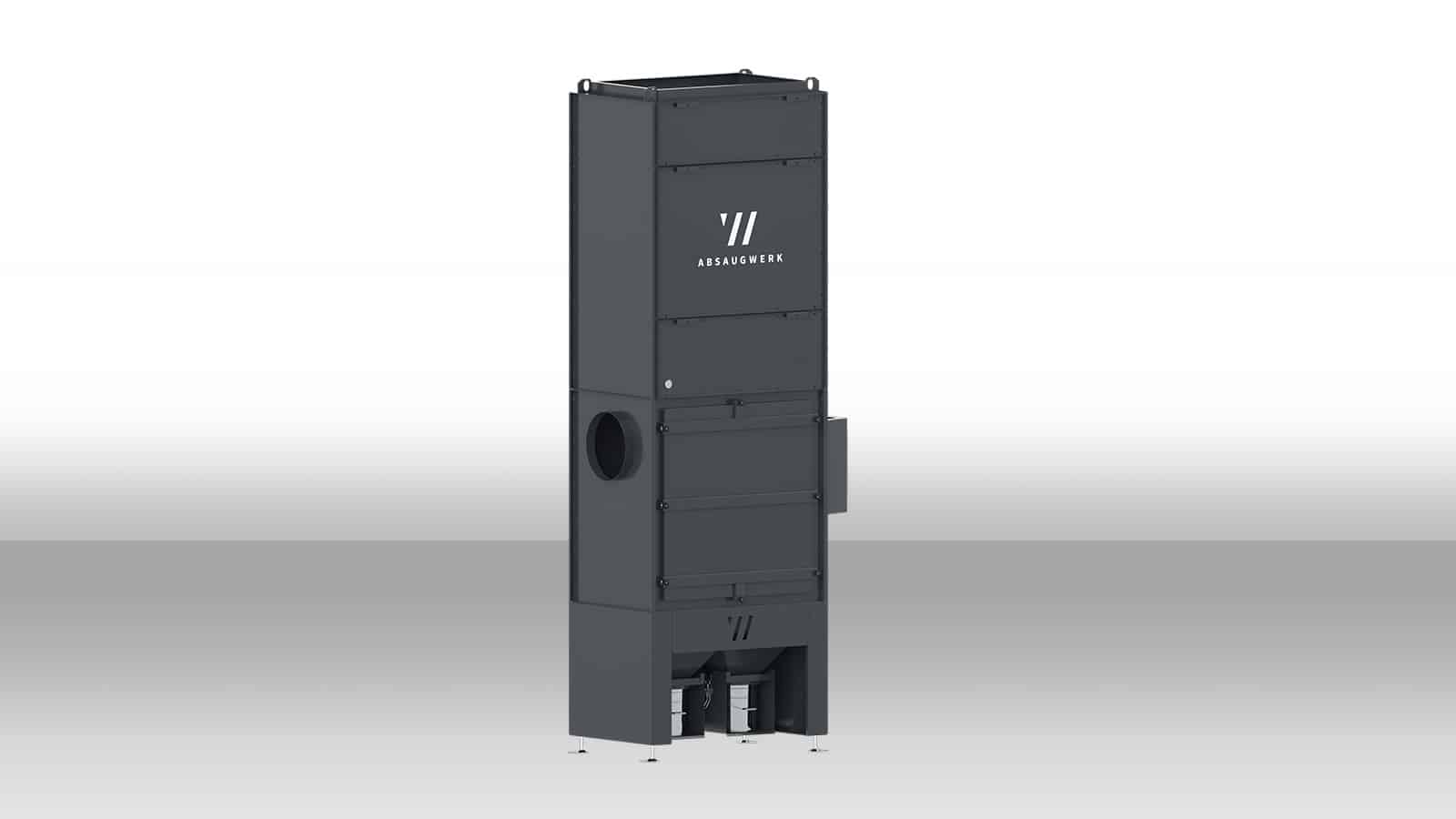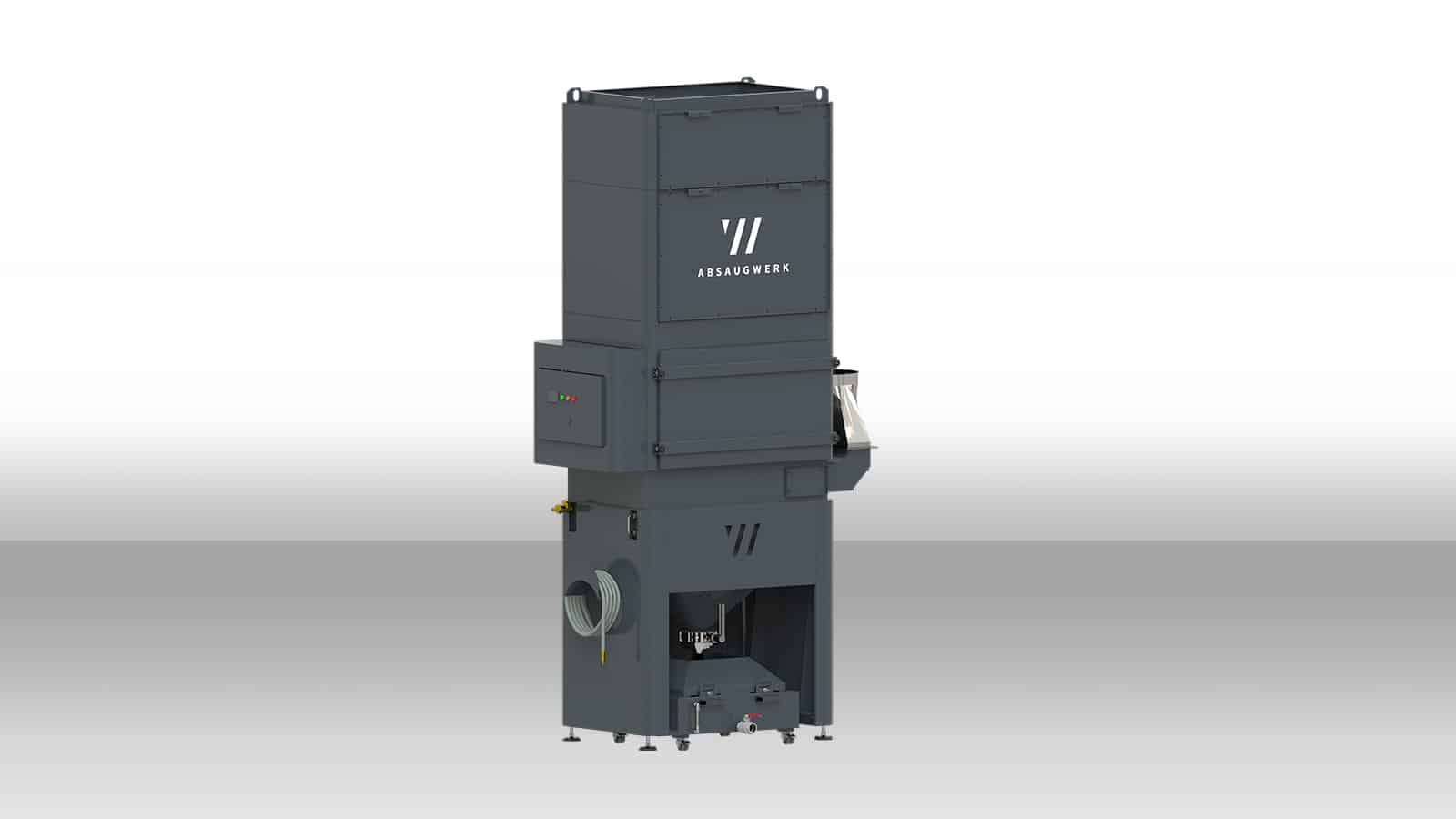
10 rules for dust-free workplaces
Protect employees from hazardous dust in the workplace
Dust and welding fumes are the cause of many occupational illnesses, chronic complaints and allergies. That is why there are regulations on how companies must keep the concentration of harmful particles low. It is worth taking a closer look at the workplace and the nature of the dust and fumes, as the smallest, invisible particles in particular are respirable and particularly dangerous to health.
The 10 rules for dust-free working
1.
Avoid dust
Dust-free work starts right at the beginning of production! Avoid stirring up, incorrect storage or carrying dust particles with your work clothing. Fine dust particles have a diameter of only 0.002 µm, whereas a human hair has a diameter of 40-20 µm and fungal spores and pollen measure 10-100 µm. It can take several hours for the dust to settle on floors and surfaces.
2.
Use low-dust materials
It is worth checking whether lower-dust materials can be used for production. These substitutes often have a positive side effect: in addition to cost savings, they also result in less cleaning work.
3.
Working in closed areas
The most effective method of technical dust control is to work in closed rooms or systems (enclosures). The feeding, processing, emptying and storage of powdered materials can be carried out in work booths or by means of a spatial separation, e.g. a partition. by means of vertical blinds.
4.
Suction directly at the source
Even if substitute materials and modern technology are used, it is often impossible to prevent dust from getting into the air. In these cases, it is particularly important to extract the particles directly at their point of exit and minimize their spread.
5.
Regularly maintain and clean extraction systems
When building extraction systems for dust control, it is advisable to commission a specialist company. If necessary, the dust mixture should be analyzed in a laboratory to determine toxic, flammable and explosive properties and to derive appropriate measures. The SOS also applies to occupational safety: order, cleanliness and safety. Even the most modern, high-performance extraction system loses effectiveness if it is not cleaned regularly.
6.
Ventilate production rooms regularly
Despite enclosed machines and extraction systems, particles can get into the air. Fine dust is invisible and remains in the air for hours. Sufficient ventilation for oxygen supply is therefore essential. The opening of gates, doors and windows causes air currents and dust turbulence. An integrated hall extraction system with pipework avoids this by automatically supplying fresh air and filtering dust. This solution requires a higher investment, but it quickly pays for itself through heat recovery and heating cost savings.
7.
Dispose of waste promptly and dust-free
Waste containing dust should be disposed of regularly and dust-free. When planning an operating facility, it is important to include equipment that catches falling or escaping material. These collection devices should be easily accessible and as dust-free as possible for emptying.
8.
Keeping workplaces clean
The workplace should be cleaned with as little dust as possible, ideally by damp cleaning. Smooth walls and floors make this task much easier. Be careful when dry sweeping or blowing off dust deposits!
9.
Keep work clothes clean
To clean workwear, it is important to wash it regularly. Under no circumstances should it be shaken out or blown off with compressed air. This is because it stirs up dust that is trapped and gets into the air we breathe.
10.
Protective equipment for dust-intensive work
If the risk assessment shows that the substance-related air limit values or the air limit value for respirable dust (general dust limit value) cannot be complied with, the employer is obliged to provide employees with suitable personal dust protection equipment.
Small particles – big damage
Dusts that are toxic, carcinogenic or allergenic are harmful even in low concentrations. These can be welding fumes or carcinogenic metal dusts such as stainless steel and other metal or wood dusts.
It is therefore important that the applicable regulations are complied with at all workplaces. The so-called general dust limit value was set at 1.25 milligrams per cubic meter of air at the workplace in 2014. The procedure for dust protection is regulated by the Hazardous Substances Ordinance and various “Technical Rules for Hazardous Substances” (TRGS).
Clarity through a risk assessment
Risk analysis of emissions and use of alternative substances
Emissions (dust, smoke, oil mist) must be analyzed in order to derive legally prescribed measures to protect employee health. This includes checking whether alternative substances with a lower health risk can be used, e.g. granules instead of powder.
Control and protection against hazardous substances in the working environment
Hazardous substances that cannot be replaced must not spread as dust, vapor or smoke in the production hall. Work processes can be adapted using enclosures, spatial partitions or extraction systems. In certain situations, additional personal protective equipment may be required, e.g. when welding.
Customized extraction systems from Neu-Ulm
As a developer and manufacturer of extraction technology, we will be happy to advise you individually on how dust-free workstations and processes can be implemented in a sensible way. The flexible configuration of our extraction systems enables us to manufacture economically optimized systems which, thanks to their energy efficiency and suction power, fit perfectly into your operation and are a sustainable investment.

